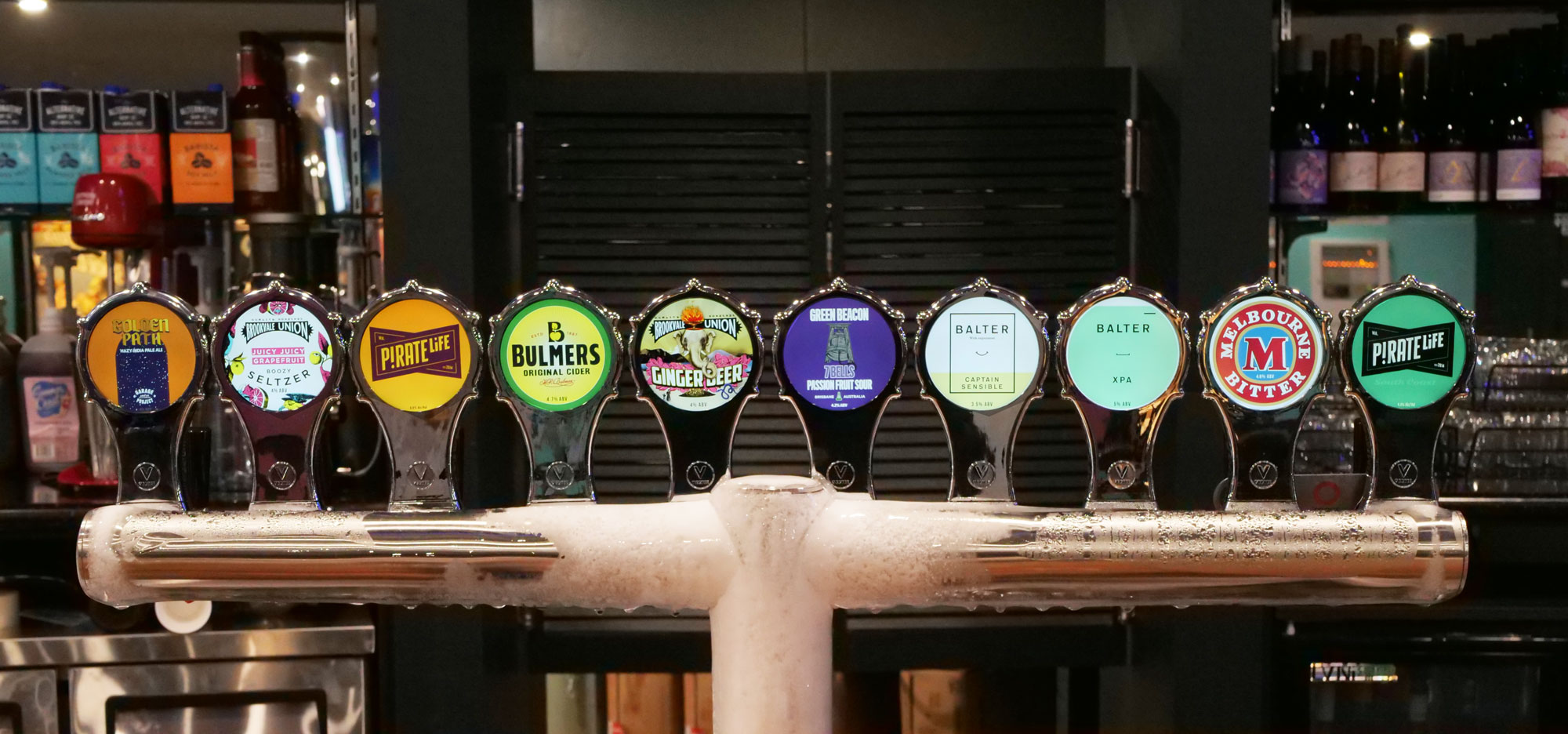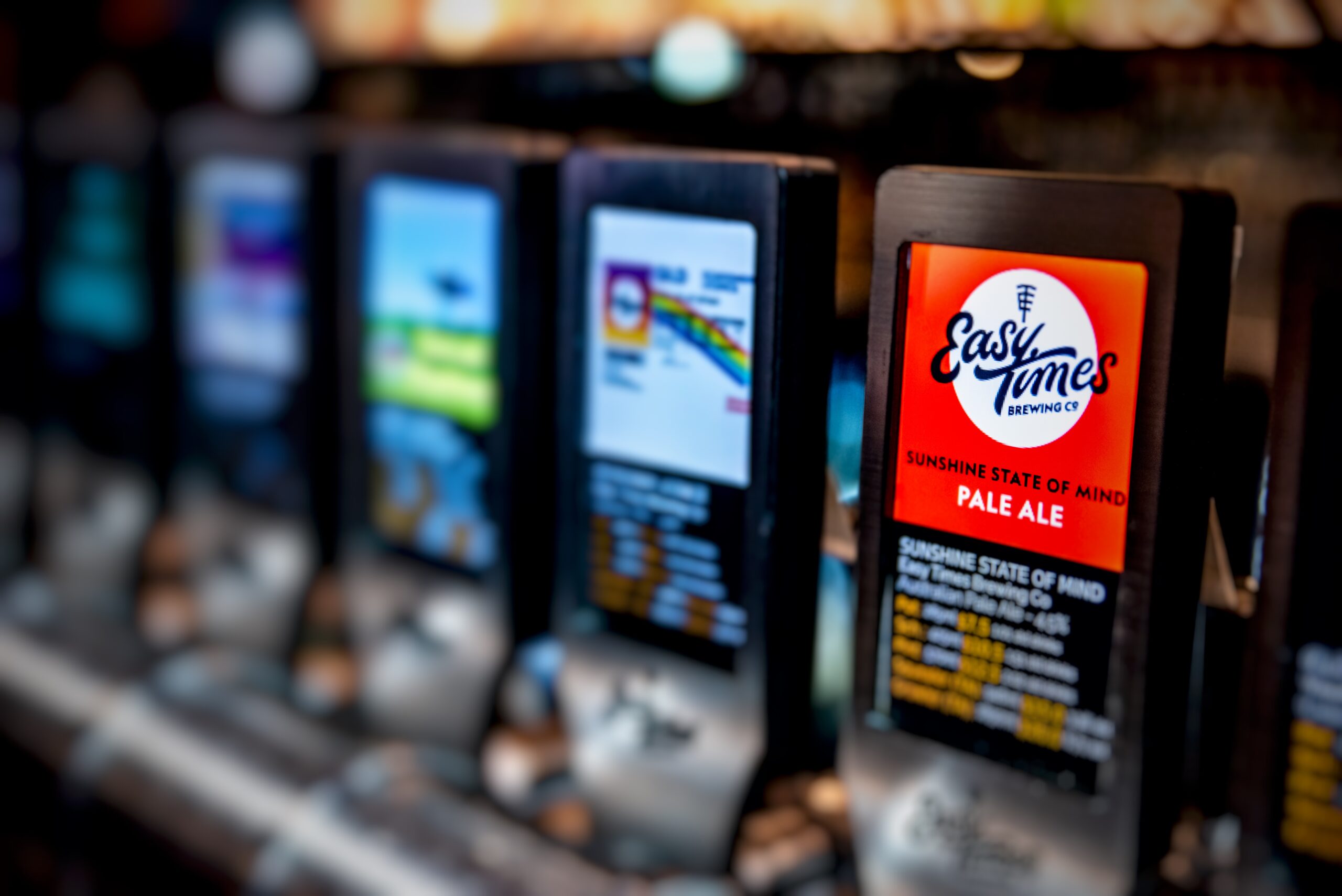
Digital decals freshen tap offerings

Breweries are constantly looking for new and innovative ways to market their beer, and this becomes even more challenging when that marketing is outside their direct control.
Digital tap decals have started to gain traction within the industry, in pubs, bars and breweries themselves, aiming to replace standard static decals on bar taps.
Western Australia’s Vertek Innovations has developed its own version of digital decals, dubbed Looped Animated Branding (LAB).
Shinae Vergone, who co-founded Vertek with husband Ryan, explained there’s a significant gap in the market for digitalised branding tailored to the industry.
“We were on a date night, about four years ago, and we were just ordering a beer and we noticed that the bar is quite static and hasn’t changed in many, many years,” Vergone explained.
“We came to the conclusion that an animation via a tap decal would solve this and allow a different point of educating a customer about tasting notes, or a promotion that’s on rather than just purely a static picture of their logo.”
The key idea behind digital decals is the freedom to change what information is displayed on a regular basis in comparison to the limitations of static decals, she said.
“When you look at something that’s digital and animated, you are attracted to it, you’re going to spend more time looking at that device. So that brand exposure and the education that a brand can portray through a digital medium is a lot more than say a static.”

How it works
A digital decal is powered by a micro-USB cable into any standard power point or USB point and is placed on top of a bar tap, as standard decals usually are.
For Vertek’s LAB solution, the cost involved is $499 per unit with discounts applied if more decals are bought which could be a barrier to entry for some bars. But the installation process is the same as installing a static decal onto the bar, with the only point of difference being the addition of a cable.
This might price smaller brands out, but Vergone suggested that the return on investment could outweigh the cost.
“Obviously, the more you buy, the affordability of that improves,” Vergone said.
“The return on investments is there. The more decals that people are seeing, the more exposure that brand is getting.”
The LAB decals have a 15 to 20 second loop time, which can give brands flexibility on what is shown. As standard practice, ABV information is often displayed on decals, but it is up to the brand for what information they want to promote, according to Vergone.
“Some brands have gone down the path of tasting notes and some of them have gone down the heritage of the business or the brewing process, so for example, how long have they been brewing for? Do they use barrels?
“Other brands have gone into more creative stuff where they’re trying to be a bit more fun. So they’ve got lots of fun things going on in their decals.”
In terms of potential for the product, Vergone explained there is an opportunity to increase points of income.
“Our world is digitised as it is, and our goal going forward for this year is to incorporate advertisements from outside brands as well.
“Decals have the ability to allow other businesses to advertise on those taps. You might see a Hungry Jack’s ad pop up in the bottom half, for five seconds, or an Uber ad offering discount codes.
“For every device or LAB that has an advertisement on it, the owners can benefit from that as well.”
Brand exposure
One brewery that has utilised digital decals is Easy Times Brewing Co. in Brisbane. The business was first approached by Beer Crawl, another company in the digital decal space, and was offered the opportunity to implement the system.
General manager of Easy Times, Josh Collins, said the brand exposure has been beneficial, especially in terms of the brewery’s location.
“The biggest thing being 45 metres from gate one of the Gabba, we have a couple of different customer sets. It’s really good for first-time consumers, especially on those high volume days, it gives them all the qualitative information,” he said.
“With it being animated, it’s obviously eye-catching. It definitely improves efficiency. Customers do love them and they make comments about them every time they do come in.”
The benefits are clear for any brewery aiming to improve upon efficiency, Collins explained.
“Each size of beer we offer shows the standard drinks on the side of them [the decals] and the customers really love that.
“For a brand-led business like us, it’s constant reinforcement. In rotation venues, it’s great.”

Marketing shifts
With marketing trends constantly changing, many breweries struggle to stay on top of the best ways to market beer. While the universal implementation of digital decals still has a long way to go, things are changing, according to Vergone.
“I can’t imagine it not being a level playing field eventually, maybe in five years time, a lot of brands will have gotten on board,” she predicted.
The risk then turns to relevancy as the market becomes more competitive, as Vergone said.
“Once it becomes more of a level playing field, then the ones that definitely haven’t gotten on board are almost non-existent, you’re not even going to see them when you’ve got a bank of 10 taps, and six of them are animated, the other four, you’re just not even going to capture much attention at all.”
Businesses should not underestimate evolving customers’ tastes when it comes to marketing and promotion, Vergone said.
“Now that the craft beer world is becoming so popular, customers want to know what flavours are in the backend of the beer, especially when it’s an unfamiliar brand,” she said.
“It’s a risk to spend $10 on a pint to think ‘yeah, that tastes like crap.’
“So it’s really good that people can put in little bits of information like that on there, rather than having customers taking a stab in the dark and wasting their money, and then potentially not trying anything else in that brand’s range, because of that first impression.”
Collins agreed and said the consistency of information benefits both the business and the customer.
“We’ve only just started to implement them but it’s that consistency of information. For our staff, it’s really helpful for them. Even for the business itself, it can have the tasting notes and the hop profiles,” he said.
Companies should learn how to adapt, according to Vergone, as the industry landscape evolves.
“I think the best bet is for brands to get in early because if you’re the only one animated on a tap bank of 10, the consumers are only going to be seeing yours and then glancing at all the other ones.
“So you’ve got a better chance of getting ahead of the market.”



